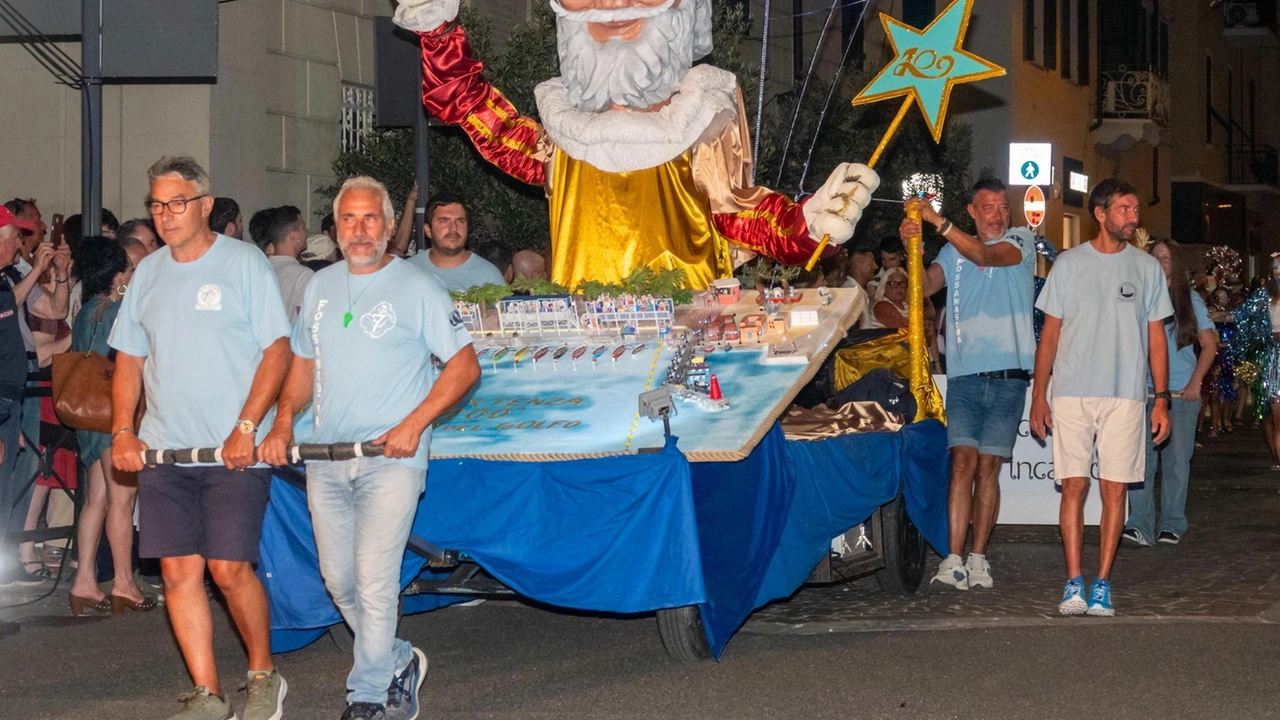A spectacular parade. Between wild stories, village pride, and celebration at the "Re Palio."

August 2, 2025

La Spezia Centro revisits the history of the "Beast of Casteo." Porto Venere celebrates the flag of Saint George, and Cadimare celebrates its fireworks.
Some wanted to celebrate the centenary of the challenge with bespoke choreography, while others went further, envisioning outsized celebrations for the thousandth edition. Some brought out ancient stories from Sprugo, others celebrated their own flag and origins, and still others wanted to highlight the challenges faced by the seaside village every day. The Palio del Golfo Parade did not disappoint. Before the eyes of thousands of La Spezia residents, the long, colorful motorcade departed from Piazza Brin, showcasing the creativity of the thirteen souls of the Gulf of La Spezia. A festive evening, the culmination of the work, genius, and dedication of thousands of villagers, concluded as per tradition in Piazza Europa, where the Palio-winning villages returned the banners to Mayor Pierluigi Peracchini, who will keep them in the Palazzo Civico until tomorrow afternoon. The parade opened, as usual, with the winning village of the last Palio, Muggiano, recreating the climactic day of the Palio, which annually draws tens of thousands of people to Piazza Brin. Next up was Fossamastra, the parade's title holder, with "Re Palio": a story set in a fantastical setting, filled with bizarre and extravagant inhabitants, celebrating the villagers themselves, those who work behind the scenes to ensure their village wins and demonstrates its worth. The centenary of the Palio is the underlying theme of Canaletto's parade, as is that of Fezzano, which—like in the cartoon Inside Out—defines the anniversary with emotions such as fear, anxiety, joy, euphoria, hope, sadness, and anger. San Terenzo paid homage to the Palio with flowers, drawing inspiration from a famous local song, "San Terenzo, who is the most beautiful flower in the gulf," to create a traveling flower display that engaged all the senses. Lerici, however, went further, imagining the Palio's thousandth anniversary, a "stellar Palio" that becomes an intergalactic race where lights, stars, and planets form the backdrop to the first Sunday in August, with robots and aliens from other galaxies swept up in the excitement of this event. Emotions were also the underlying theme of the Marola parade: the anxiety and anger of those who look out their windows every day and, instead of seeing the sea, "see a wall with warships," the nostalgia for the village of yesteryear, but also the joy, cheerfulness, and lightheartedness of those who are happy to live, despite everything, in that small village perched on a hill. Le Grazie celebrated its centennial milestone in its own unique way: a seven-part story, depicting significant historical events that occurred around the world during the years the village of Ria was a protagonist in the Palio. Pride in its flag, the Cross of St. George, inspired the village of Porto Venere: a banner that signifies courage, prestige, but also village identity. Not just glitter, but also problems: thus, in its parade, Tellaro added a more reflective section to the more theatrical part connected to "its" octopus, to the church featured in the FAI's Places of the Heart, and to the first "Polpitano Beachwear" collection, shedding light on the long-standing logistical problems that plague the village. The famous Palio fireworks were the protagonists of the Cadimare parade, while the Venere Azzurra celebrated the legacy of Mary Shelley and the Gulf's cursed poets in an ideal encounter between Gothic aesthetics and the simple, archaic strength of the Gulf's people. The parade closed with a choreography centered on "A bestia der Casteo," a quintessentially La Spezia story from the early 20th century, set at San Giorgio Castle.
La Nazione





